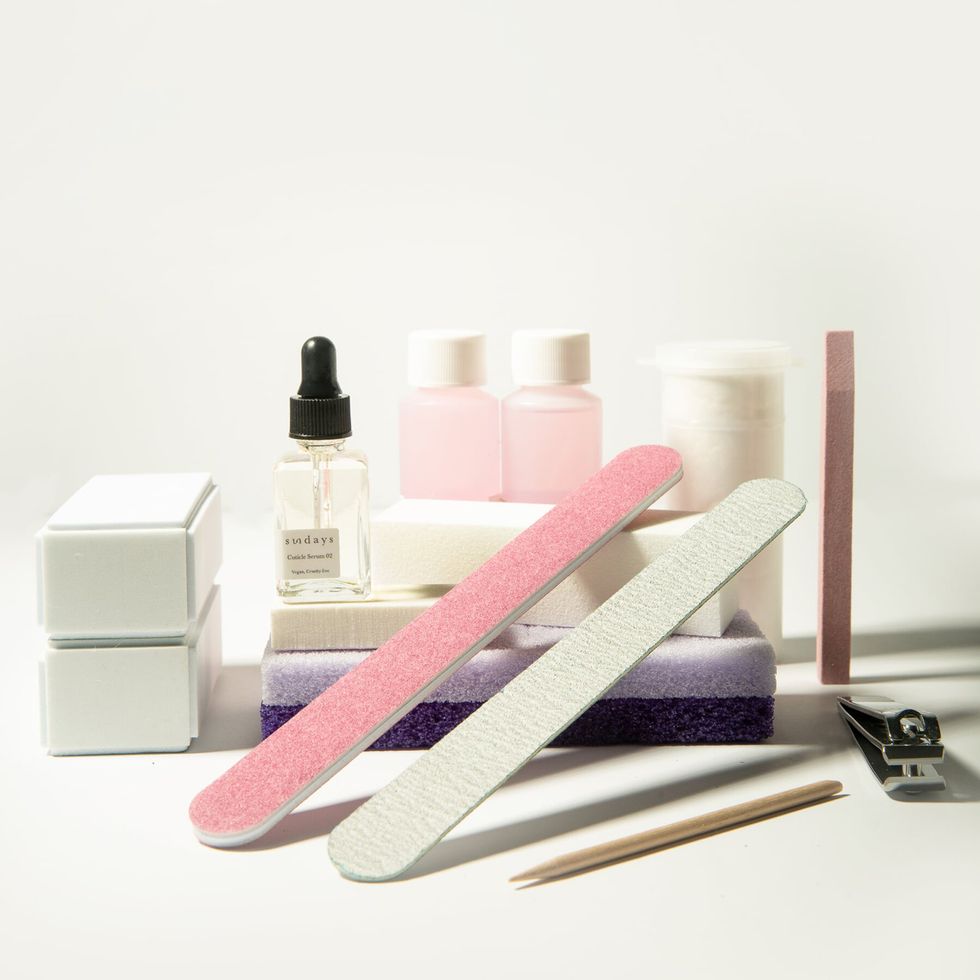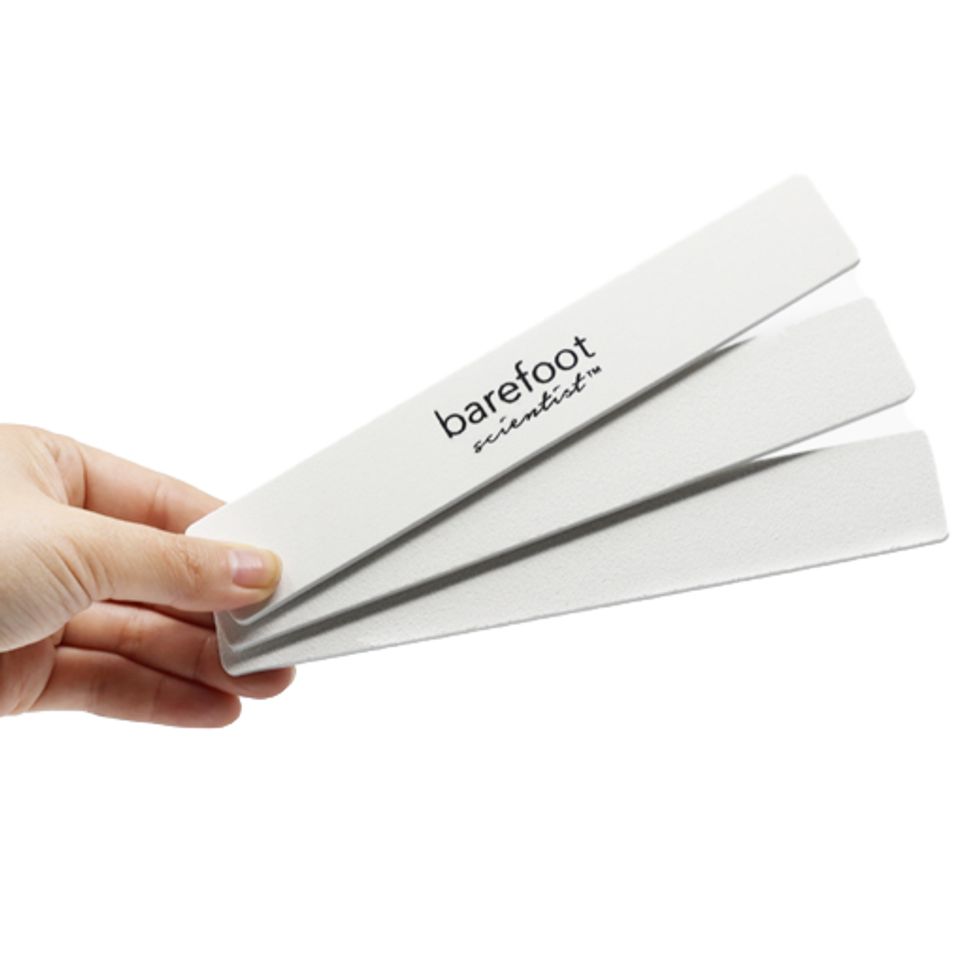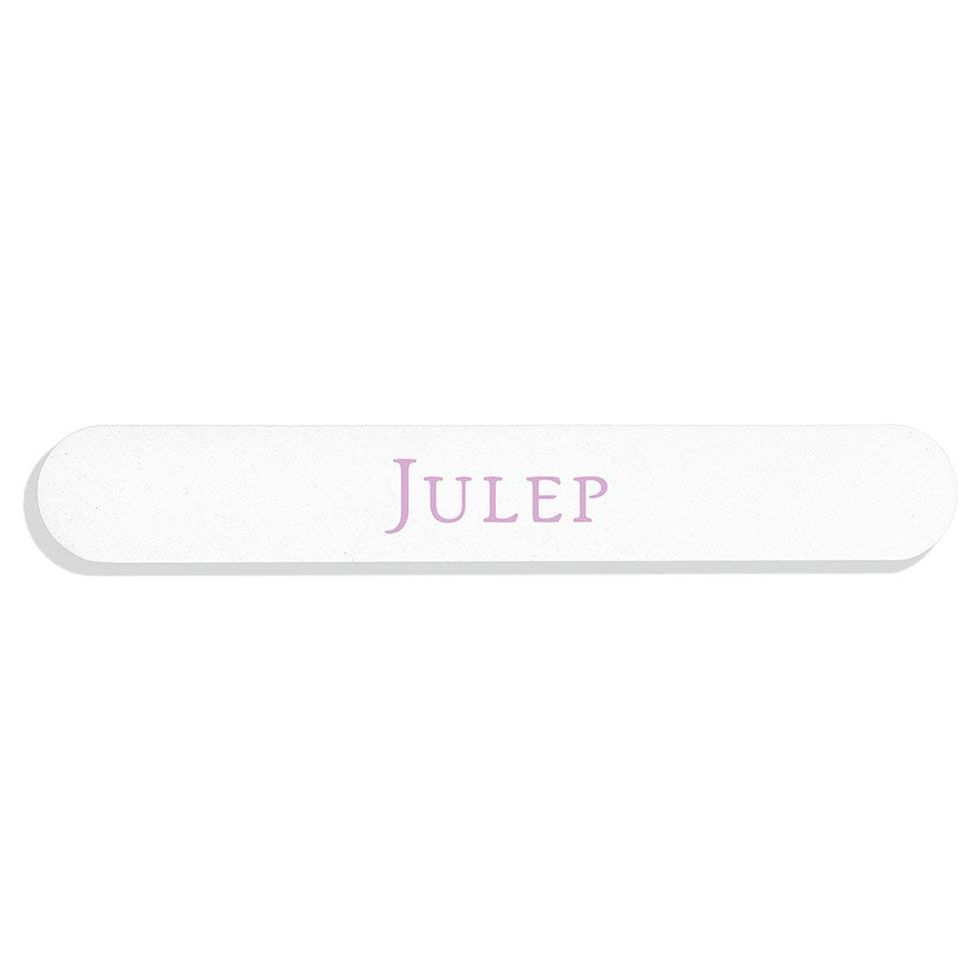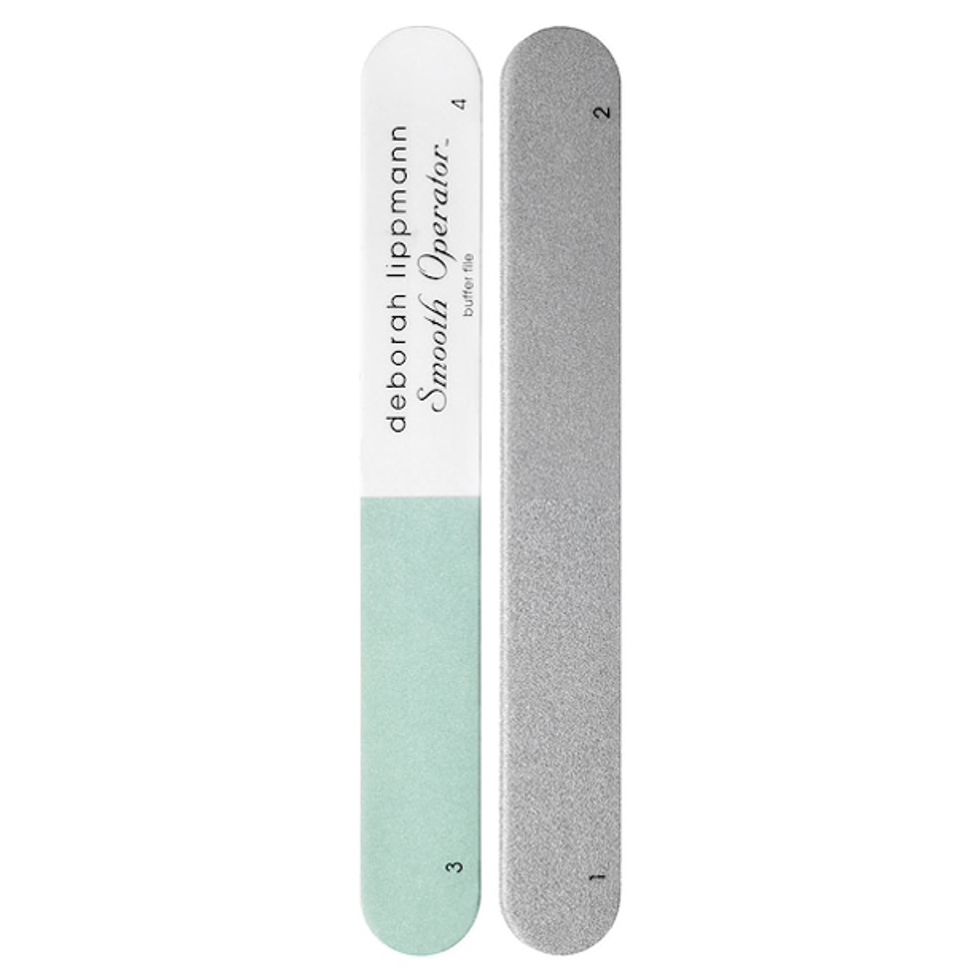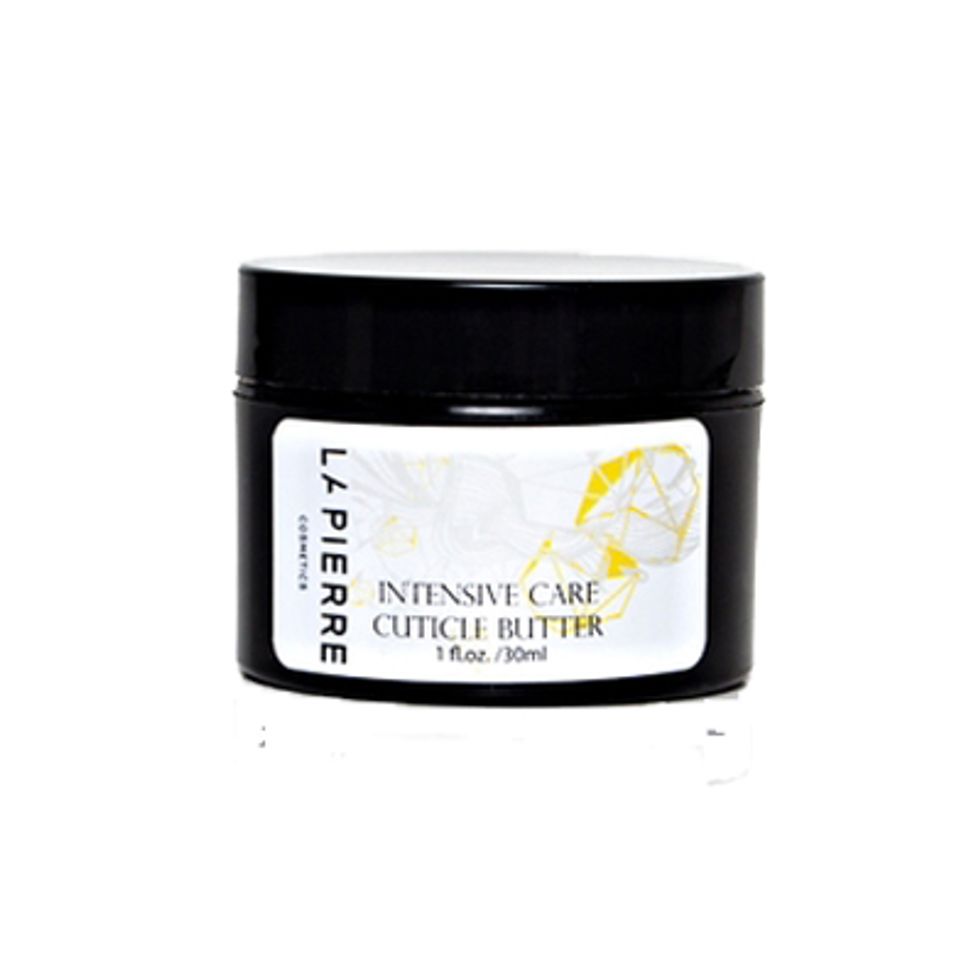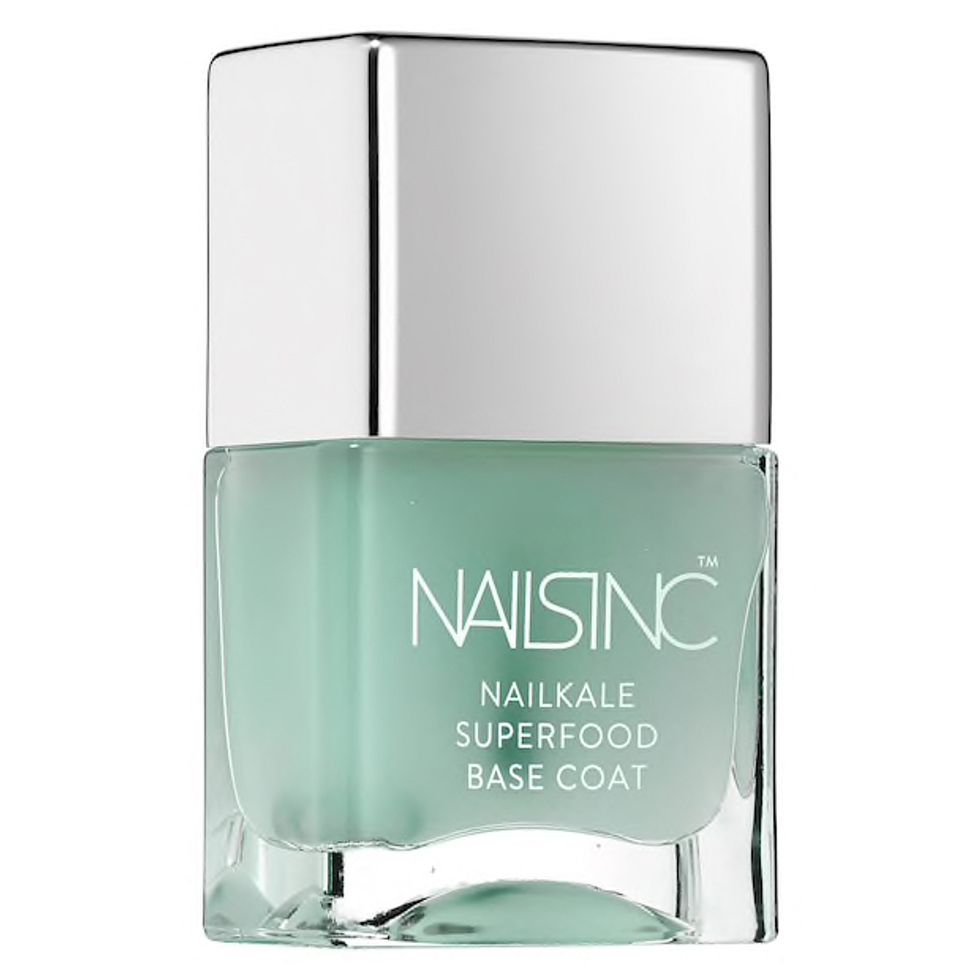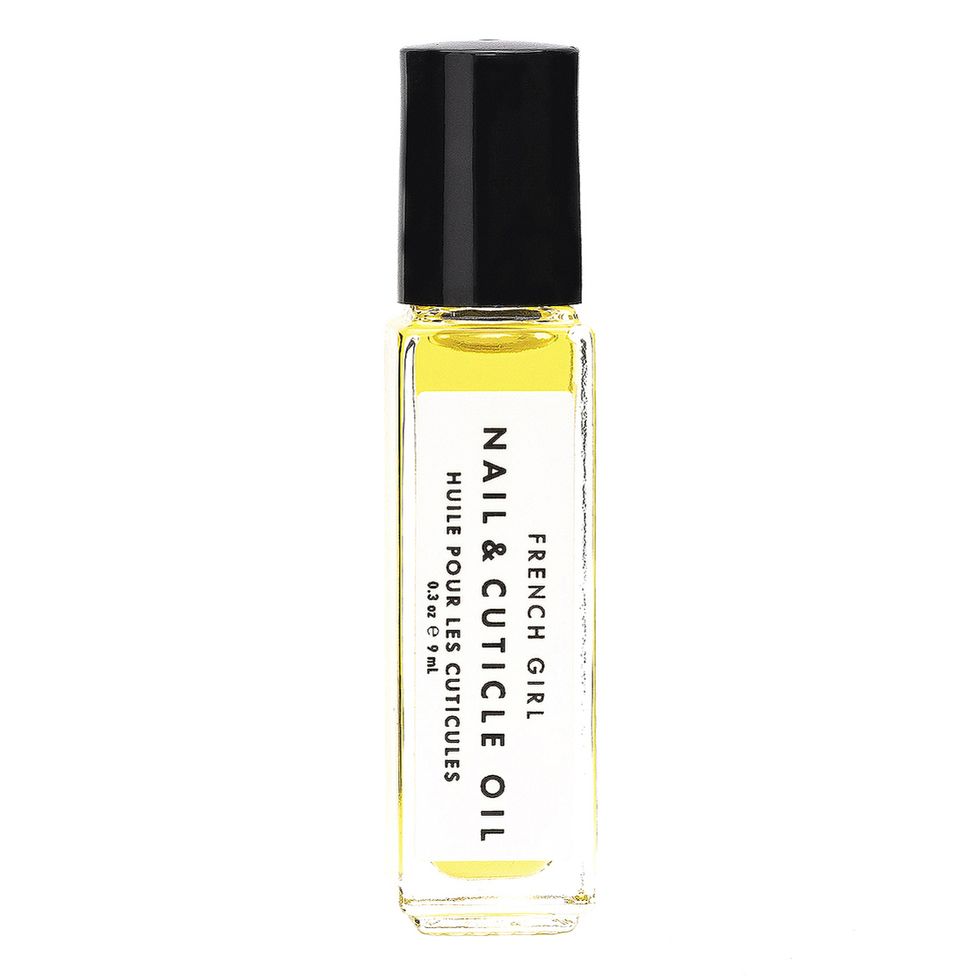Nails
You’re Probably Filing Your Nails Wrong
Help keep your nails from breaking with the proper technique.

11 July, 2020
10 November, 2021
Until recently, there was an era of film that seemed obsessed with depicting a high-school villain filing her nails at her desk. She smacks her gum while simultaneously running her metal file across her nail beds, looking so bored, to the point that you wonder how she even has any fingernails left by the end of the movie. Although we don’t recommend filing in class, per se, we do support picking up this habit while at home to keep your nails healthy and strong.
If you already file your nails at home, you know how much more durable they feel afterwards—not to mention, they’re far less prone to breakage. But did you know that there is a right and wrong way to file nails? We turned to nail expert Amy Ling Lin, the founder of sundays, a nail-care company with studios in New York City. She spent a great deal of time learning the ins and outs of filing nails—in fact, Lin reveals, “I spent a whole month in school doing nothing but studying how to file nails.” Suffice it to say, Lin has a plethora of information on how to correctly file your nails. Here are a few of her tips and tricks.
If you already file your nails at home, you know how much more durable they feel afterwards—not to mention, they’re far less prone to breakage. But did you know that there is a right and wrong way to file nails? We turned to nail expert Amy Ling Lin, the founder of sundays, a nail-care company with studios in New York City. She spent a great deal of time learning the ins and outs of filing nails—in fact, Lin reveals, “I spent a whole month in school doing nothing but studying how to file nails.” Suffice it to say, Lin has a plethora of information on how to correctly file your nails. Here are a few of her tips and tricks.
Gather the Correct Tools
With so many different nail files out there, it can become overwhelming when deciding which tool to purchase. Do you choose the sandpaper-esque disposable file that you found at your drugstore, or the classic metal file that the aforementioned high-school villain totes around? Lin explains, “My favorite nail file that I use at home is an emery cushion board. Since it has a cushion in it, it’s very gentle to your nails and causes the least breakage.” She explains that emery boards “will normally [be labeled] with a number, and the higher the number, the [gentler] the grit.” Try to go for a board with about 180 grit for hands—these files tend to be gentler and provide more control when shaping the nail.
Lin continues, “We should use a different file for toenails versus the nails on our hands because the toenails tend to be a little thicker. Because files for the toes are so powerful, they can file the nails on our hands too short.” An emery board with a grit of about 120 will suffice.
Although metal and glass or crystal files sound exciting and futuristic, they are not flexible and extremely rough, which can cause an uneven filing or possible breakage. Stick with Lin’s suggestion of a softer emery cushion board.
Prep Your Nails
Now that you have your perfect nail-filing tool, you are one step closer to those healthy, square, round, or almond-shaped digits. But first, be sure to clean and dry your nails properly. It is crucial not to file nails while wet; Lin explains, “When we file wet nails, the nail absorbs a lot of water and becomes softer, [meaning] it can become quite easy to break the nail or over-file, especially if the client has longer nails.”
Direction Is Everything
The phrase different strokes for different folks will never apply to nail filing. In fact, everyone should be following the same stroke pattern to keep nails smooth and damage-free. Most people use a back-and-forth motion—it gets the job done quickly, sure, but it can cause micro tears in the nail bed, which leads to breakage. Lin explains that it is much harder to file nails into our desired shape this way because it tends to be more of a sanding experience than a sculpting one. Says Lin, “My teacher told me a helpful tip for filing: It’s like playing the violin. You move in one direction.” She recommends filing one side of the nail in one direction, the other side of the nail in one direction, and then, using the same pressure, file the middle of the nail in one direction. This will provide a smooth finish and keep your nails free from undue damage.
Shorties, This One Is for You
Filing short nails is tricky because if nails are over-filed, they can cause pain or even infection. Says Lin, “I suggest filing shorter nails on a 45-degree angle. Put the file underneath the nails, even if they are short, and try to create that angle. If the file is held perpendicular to the end of the nails, sometimes you end up filing people’s skin.” Holding the board under the nail prevents filing down to the nail bed. If you bite your nails or have little to no growth, Lin recommends using this technique to shape just the nails’ corners while you wait for them to grow.
Buff, Buff, Baby
Hooray! You’ve completed filing your nails, but you’re not quite done shaping them just yet. Filing typically leaves nails smooth and well-shaped, but there can still be tiny residual pieces under the nail bed left behind. To smooth the nails out to shiny, flake-free perfection, consider buffing the nails with a buffing block. Says Lin, “Buffing is a gentle way of filing: It smooths out the edges and can be used on the nail bed because it’s the [gentler] way to file nails.” Lin recommends gliding a buffing block under the nails and on the nail bed to rid the nails of any dust or residual flakes. And there you have it—perfectly shaped, healthy nails that are ready for the rest of your at-home manicure.
Shop the Story:
Photo: Getty
Want more stories like this?
Deborah Lippmann’s Genius At-Home Nail-Art Technique
5 Dream Vacation Spots That Are Inspiring Our Next Manicure
You *Can* Give Yourself a Salon-Quality Pedicure at Home—Here’s How
Want more stories like this?
Deborah Lippmann’s Genius At-Home Nail-Art Technique
5 Dream Vacation Spots That Are Inspiring Our Next Manicure
You *Can* Give Yourself a Salon-Quality Pedicure at Home—Here’s How

